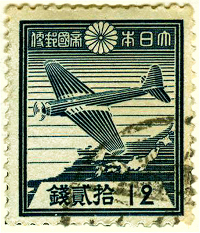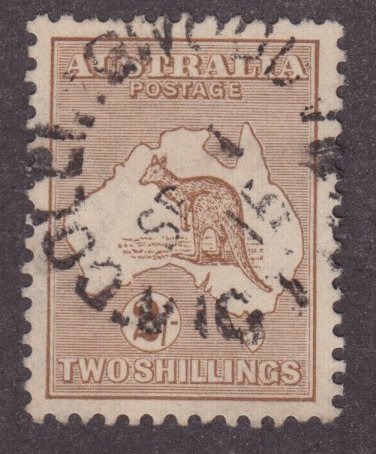
Discussion - Member to Member Sales - Research Center

Discussion - Member to Member Sales - Research Center

One outcome of discussions the executive has had is that we are going to start a series of once-monthly "Philatelic Workshops" in which we will go back to the basics for new members while hoping to maintain the interest of older members, and perhaps teach them something! What I need to develop (as program chair) is a list of potential meeting topics which will entice both novices and specialists.
So far, I've thought of these possible topics
• How to use philatelic catalogues
• Stamp albums (proprietary, home-made, stock books)
• How to store and handle stamps and covers safely
• The wide range of catalogues
• The attributes of a collectible cover
• The attributes of a collectible stamp
• What people collect, and why
• How to expand a collection beyond the point of "completeness"
• What judges look for in exhibits
• Who is the best judge of an exhibit
• When is a collector ready to exhibit
• How much should a collector spend on a stamp, relative to catalogue value
• Stamp design and "anatomy"
Obviously, some of these topics can be blended, and some expanded into two or more topics.
I would really appreciate any ideas you have. It would be especially useful to see comments from new collectors. It's been too many years since I was a beginner to have a clear idea of what beginners need!
Many thanks,
Bob

Login to Like
this post
Dear Bob,
You've overlooked an area that you are quite knowledgeable in-making an heirloom and passing it on.We have some articles on that topic that you have already contributed to, so just browse around the articles section and have at it.
Dan C.

Login to Like
this post
Hi Bob, (I'm new here!)
That sounds like a great idea, as a collector returning to the hobby after many years I could certainly use a program like that!
Unfortunately I am in Saskatchewan, not beautiful British Columbia...
Take care, and it is great to be a part of the 'group'!
Kind regards.
Garner

Login to Like
this post
Bob, i'm the only serious cover collector in my local club, so when I talk about covers, it's like talking to beginners, which is great, because there's so much that's fascinating. Some things i've covered include
a discussion of franking
rates (break this up anyway you want, from a history of a specific rate to the major rates of a specific period)
UPU (what it is, what it does)
CSAC
PRC and the 2006 law that made it an afterthought
dead countries
occupation stamps
overprints
the introduction of bi-colored stamps (and how they're made)
various presses
various perforators and die cutters
topical collecting
a list of online resources
David

Login to Like
this post
Good afternoon Bob,
Your list is what I would like to see as both a new, and slighlty seasoned collector. I would add an introduction to postal history would also be good.
Alyn

Login to Like
this post
Bob,
Years ago you helped with some suggestions to help out the Quad City Stamp Club, and I guess it is time for the QC Stamp Club to reciprocate. Back in the mid 1960's the QCSC held a two year training session on the basics of stamp collecting. In the archives of the club I came across copies of the course lessons. I scanned them into PDF format. They are rather large files 6.9 and 5.8 MB each. If OK, I will email them to you. I will also try to post them on the QC Stamp Club website (www.qcstampclub.com). I can break the files into smaller portions also. The detailed material needs review and updating but most remains true today.
The first year consisted of 9 lessons:
1. The Working Tools of Philately
2. Pitfalls You Should Avoid
3A. Annotating Your Album Pages
3B. Errors, Freaks and Oddities
4A. Specialties and Specializing
4B. Envelope Stamps
5A. Stamp Papers and Printing
5B. Watermarks
5C. National Philatelic Societies
6. Cover Collecting
7A. Stamp Identification
7B. Used Stamps vs Mint Stamps.
8A. The Stamp Catalog
8B. Franklin & Washington Issues 1908-1922
8C. Collecting First Day Covers
9A. Stamp Mounting for Exhibition
9B. Auctions and Sources of Supply
9C. Philatelic Workshop Review
George (biggeorge)

Login to Like
this post
Bob,
Continuing with the Second Workshop.
1. Introduction
A. Working Tools of Philately
2A. Philatelic Pitfalls
2B. New Issues
3A. Printing of United States Stamps
Illustration of Printing Plates
3B. First Day and Special Event Covers
3C. Topical Collecting Highlights
4A. The Stamp Catalog
4B. National Societies
5A. Perfins
5B. Grills
6A. Precancels
6B. Errors, Freaks and Oddities
7A. Annotating Your Album Pages
7B. Auctions and Sources of Supply
8A. Watermarks
George (biggeorge)
8B. Stamp Identification

Login to Like
this post
Hi Bob,
A most useful undertaking. Have you considered recording these workshop session? Many Stamp Clubs are often scratching around for interesting subject matter and what you are proposing could help a lot of people (clubs). If you come up with some material that you feel others could use, we would definitely publish it for you.
Regards ... Tim

Login to Like
this post

The BC Philatelic Society is starting in a new direction in February. It came to our attention after VANPEX 2012, in September, that some new members have felt pretty much left out of the loop when it comes to exhibiting and even to just talking about philately. It seems that we older, perhaps jaded collectors have a tendency to assume that every collector understands the same arcane jargon that we understand. After all, who wouldn't know that "postal history" is nothing but a dirty old envelope?!
One outcome of discussions the executive has had is that we are going to start a series of once-monthly "Philatelic Workshops" in which we will go back to the basics for new members while hoping to maintain the interest of older members, and perhaps teach them something! What I need to develop (as program chair) is a list of potential meeting topics which will entice both novices and specialists.
So far, I've thought of these possible topics
• How to use philatelic catalogues
• Stamp albums (proprietary, home-made, stock books)
• How to store and handle stamps and covers safely
• The wide range of catalogues
• The attributes of a collectible cover
• The attributes of a collectible stamp
• What people collect, and why
• How to expand a collection beyond the point of "completeness"
• What judges look for in exhibits
• Who is the best judge of an exhibit
• When is a collector ready to exhibit
• How much should a collector spend on a stamp, relative to catalogue value
• Stamp design and "anatomy"
Obviously, some of these topics can be blended, and some expanded into two or more topics.
I would really appreciate any ideas you have. It would be especially useful to see comments from new collectors. It's been too many years since I was a beginner to have a clear idea of what beginners need!
Many thanks,
Bob

Login to Like
this post

re: proposed curriculum for an introduction to philately: what should be covered
Dear Bob,
You've overlooked an area that you are quite knowledgeable in-making an heirloom and passing it on.We have some articles on that topic that you have already contributed to, so just browse around the articles section and have at it.
Dan C.

Login to Like
this post

re: proposed curriculum for an introduction to philately: what should be covered
Hi Bob, (I'm new here!)
That sounds like a great idea, as a collector returning to the hobby after many years I could certainly use a program like that!
Unfortunately I am in Saskatchewan, not beautiful British Columbia...
Take care, and it is great to be a part of the 'group'!
Kind regards.
Garner

Login to Like
this post
Auctions
re: proposed curriculum for an introduction to philately: what should be covered
Bob, i'm the only serious cover collector in my local club, so when I talk about covers, it's like talking to beginners, which is great, because there's so much that's fascinating. Some things i've covered include
a discussion of franking
rates (break this up anyway you want, from a history of a specific rate to the major rates of a specific period)
UPU (what it is, what it does)
CSAC
PRC and the 2006 law that made it an afterthought
dead countries
occupation stamps
overprints
the introduction of bi-colored stamps (and how they're made)
various presses
various perforators and die cutters
topical collecting
a list of online resources
David

Login to Like
this post

re: proposed curriculum for an introduction to philately: what should be covered
Good afternoon Bob,
Your list is what I would like to see as both a new, and slighlty seasoned collector. I would add an introduction to postal history would also be good.
Alyn

Login to Like
this post

re: proposed curriculum for an introduction to philately: what should be covered
Bob,
Years ago you helped with some suggestions to help out the Quad City Stamp Club, and I guess it is time for the QC Stamp Club to reciprocate. Back in the mid 1960's the QCSC held a two year training session on the basics of stamp collecting. In the archives of the club I came across copies of the course lessons. I scanned them into PDF format. They are rather large files 6.9 and 5.8 MB each. If OK, I will email them to you. I will also try to post them on the QC Stamp Club website (www.qcstampclub.com). I can break the files into smaller portions also. The detailed material needs review and updating but most remains true today.
The first year consisted of 9 lessons:
1. The Working Tools of Philately
2. Pitfalls You Should Avoid
3A. Annotating Your Album Pages
3B. Errors, Freaks and Oddities
4A. Specialties and Specializing
4B. Envelope Stamps
5A. Stamp Papers and Printing
5B. Watermarks
5C. National Philatelic Societies
6. Cover Collecting
7A. Stamp Identification
7B. Used Stamps vs Mint Stamps.
8A. The Stamp Catalog
8B. Franklin & Washington Issues 1908-1922
8C. Collecting First Day Covers
9A. Stamp Mounting for Exhibition
9B. Auctions and Sources of Supply
9C. Philatelic Workshop Review
George (biggeorge)

Login to Like
this post

re: proposed curriculum for an introduction to philately: what should be covered
Bob,
Continuing with the Second Workshop.
1. Introduction
A. Working Tools of Philately
2A. Philatelic Pitfalls
2B. New Issues
3A. Printing of United States Stamps
Illustration of Printing Plates
3B. First Day and Special Event Covers
3C. Topical Collecting Highlights
4A. The Stamp Catalog
4B. National Societies
5A. Perfins
5B. Grills
6A. Precancels
6B. Errors, Freaks and Oddities
7A. Annotating Your Album Pages
7B. Auctions and Sources of Supply
8A. Watermarks
George (biggeorge)
8B. Stamp Identification

Login to Like
this post

re: proposed curriculum for an introduction to philately: what should be covered
Hi Bob,
A most useful undertaking. Have you considered recording these workshop session? Many Stamp Clubs are often scratching around for interesting subject matter and what you are proposing could help a lot of people (clubs). If you come up with some material that you feel others could use, we would definitely publish it for you.
Regards ... Tim

Login to Like
this post

